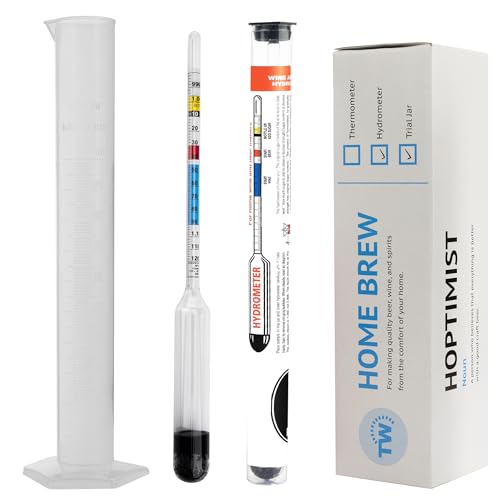I'm going to throw some words of caution in here. This will come across as a bit fatuous but what the heck.
"Unless you understand water chemistry, don't offer people advice based on what you do with your water, for your beers." It may, probably will, be wholly inappropriate for another brewer based in a completely different area of the country, with a completely different water profile, and a completely different requirement to you.
Now for the second fatuous statement
"Unless you are brewing consistently good beers with a minimum of water treatment, don't bother going any further" Seriously, there are a lot more fundamental things to get right first, before water treatment will make a significant difference to the end result. (unless you live in certain regions and want to brew at the extreme ends of beer styles)
Now for the third fatuous statement
"If you are going to ask questions about water treatment, try and learn the terms that are used so that you can follow the discussion" . . . . .
Here we go
Hardness This is the level of calcium and magnesium ions in the water. you need a minimum of 50-60ppm of calcium for the brewing processes, in the mash fermenter and storage, and magnesium is an important element for enzyme function, but you only need ~5ppm. These levels can be supplied by the malt, and most water supplies in the UK have an adequate level as they stand.
Hardness is GOOD for Brewing
Alkalinity. This is the level of bicarbonate and carbonate ions in the water. Alkalinity buffers the pH of the mash (and subsequent steps) and prevents it from falling in the proper range of 5.2-5.7 (mash - measured 10 minutes after the start). A high pH can cause the extraction of tannins and other compounds from the grain which can cause astringency and hazes.
Alkalinity is BAD for brewing
Generally, but not always - Burton is a prime example, hardness and alkalinity go hand in hand, if you have hard water you have a high level of alkalinity. Another degree f confusion is also added into the mix by the water companies (and other water labs) who adopted the convention of reporting hardness and alkalinity as if it were contributed wholly by calcium carbonate "as CaCO3" if you have a hardness value on your water report you cannot use it as your alkalinity, they are two completely separate things that are reported (for the sake of convention) as if they are the same thing. Don't get sucked in, If you see "Hardness as CaCO3" on your report ignore it. Stick your fingers in your ears and say very loudly "LA, LA, LA, LA, LA, LA, LA, LA, LA, LA, LA, LA, LA, LA, LA, LA, LA, LA, LA, LA, LA, LA, LA, LA, LA, LA, LA, LA, LA, LA" over and over again until you forget all about it.
Get an alkalinity test kit and use it each and every time you brew
pH. The level of hydrogen ions in the water, this really has no bearing on brewing, so is best ignored as far as water treatment is concerned. It has a bearing on enzyme performance in the mash, but cannot really be adequately measured using pH strips, as the acids in the mash swap the indicators used on the strips.
Simple water treatment can be described as follows - assuming you have water with a reasonable amount of hardness and a moderate alkalinity level.
- Remove Chlorine - Nice and simple one, if you can smell chlorine when you run your cold tap at full bore into a bowl in the sink you need to treat your water. . . . You may decide to treat it anyway as a precaution. The simplest solution is to use a campden tablet, and simply crush this into the HLT or Boiler before you fill it. One campden tablet will treat 17UK Gallons at a chlorine level of up to 3ppm
[/*:m:1pprmh22]
- Reduce Alkalinity - As a generalisation, the paler the beer the lower the alkalinity needs to be to allow the mash pH to fall into the correct range. Lagers need something like 10-20ppm and stouts like 100-125ppm. So how can you reduce it?
- Boiling breaks up the hydrogen carbonate ion driving off of carbon dioxide, and precipitates calcium carbonate. Particularly effective if you add a tsp of gypsum or calcium chloride before boiling . . . you need to let it cool and rack off the chalk before using . . . Don't forget to measure the alkalinity once you have boiled it, so that you know it's beef effective enough.[/*:m:1pprmh22]
- Adding an Acid The hydrogen ions from the acid react with the bicarbonate ion to produce water and carbon dioxide which is driven off when you heat the liquor for the mash. The reaction is pretty much instantaneous and does not require any input of energy. Pretty much any acid can be used, however, some are more flavour neutral than others. Hydrochloric, Sulphuric, and, some authors include, phosphoric are very flavour neutral. Lactic, Citric et al have a flavour profile that will transfer through to the beer. As little as 6ml of 75% lactic leaves an obvious 'infected' flavour in 50L of pilsner. As long as you are only reducing the alkalinity by a small amount in dark beers then any acid can be used, as you start reducing the alkalinity further then you have to consider which acids are appropriate. CRS or AMS is a mix of sulphuric and hydrochloric acids which give a fixed ratio of sulphate and chloride in the liquor. This may or may not be what you want in your beer, and may well make it impossible to hit the desired mineral profile without adding an excess of calcium salts, so again is really only appropriate for moderate alkalinity reduction.[/*:m:1pprmh22]
Any good water treatment calculator will tell you how much acid to use to reduce your measured alkalinity, always add 2/3rd's of the acid you get told, measure the alkalinity again and then add the final amount. Ofttimes it appears that the acid strengths reported on the container are not what is actually inside, and you don not want to be over or under treating your water.
[/*:m:1pprmh22]
- Adjust Calcium levelsYou do this by adding calcium salts of the 'flavour' ions. The two prime flavour ions are sulphate, which increases the perception of hop bitterness and palate dryness, and chloride, which increases the perception of maltiness and palate fullness/roundness. If aiming for a hoppy pale beer then you need to add calcium sulphate (gypsum), if you are brewing a dark malty mild then use calcium chloride. If your calcium (hardness) level is already high, then you need to be careful about adding more, and should consider diluting your water before you start to allow you to get the sulphate:chloride balance where you want it.[/*:m:1pprmh22][/list:u:1pprmh22]
If the OP's Hardness is truly that high (420ppm) then he needs to take a combination of approaches. Firstly dilution using either RO water, available from a decent aquarist retailer, or a bottled water of known LOW alkalinity like Tesco Ashbeck or Asda Smartprice. at a ration of 1:1. This will reduce everything in the water by half its value, and means that the amount of acid needed to reduce the alkalinity needed for the beer will be much lower and using the appropriate acid below any flavour threshold. I don't think that boiling is going to be that effective and surmise that a large amount of the hardness is permanent hardness (calcium combined with sulphate Ala Burton and Munich) rather than temporary hardness. While boiling will reduce any temporary hardness present (not eliminate) it will not touch the permanent hardness, which means the only effective way of reducing the hardness (and sulphate levels) is through dilution.




































![BREWING THERMOMETER STICKERS ACCURATELY MONITOR FERMENTING BEER & WINE LIQUID TEMPERATURES 5PCS HOME BREW SPIRITS WINE LCD ADHESIVE [US]](https://m.media-amazon.com/images/I/311DDjo2X3L._SL500_.jpg)






 ), is perhaps borderline for pale ales and lagers where an ideal would be ~30ppm (perhaps less for pilsners and other pale lagers)
), is perhaps borderline for pale ales and lagers where an ideal would be ~30ppm (perhaps less for pilsners and other pale lagers)